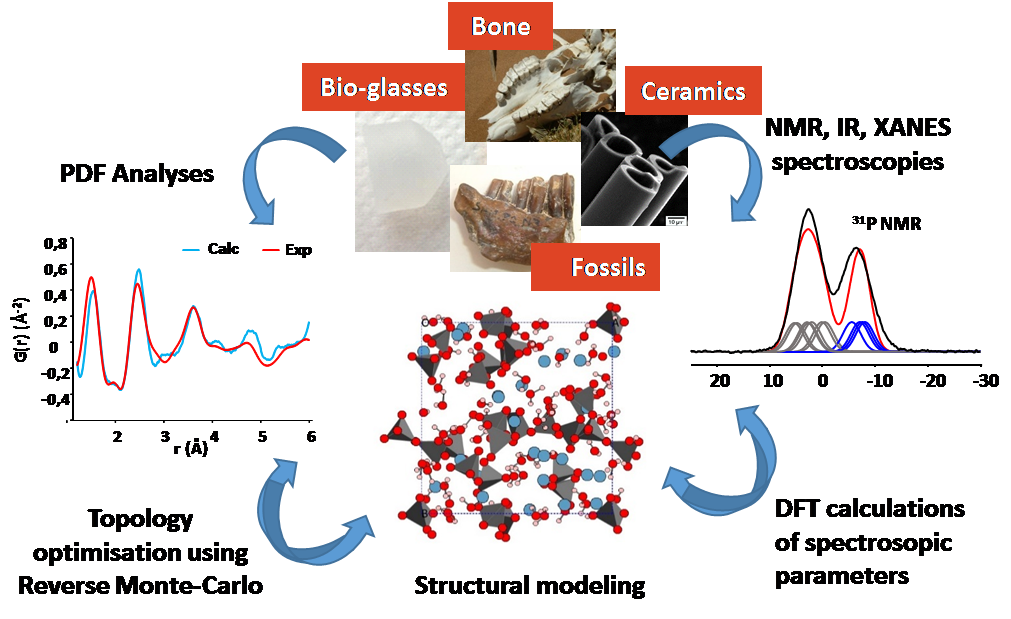Spectroscopy and Modeling
The developed methodology for materials characterization is based on the comparison of experimental spectroscopic data and calculated electronic properties.
Structural models are elaborated using ab initio molecular dynamics (MD) and relaxed using Density Functional Theory (DFT) taking into account all experimental data (density, composition, types of local environments extracted from NMR….). For each optimized structure, different type of properties can be computed, including NMR parameters, K pre-edge structures in XANES, vibrational parameters and Pair Distribution Fonctions (PDF). A second step of structures optimization can be performed by reverse Monte Carlo to minimize the differences between the experimental and the calculated PDF data. The relevance of the different models is finally evaluated by comparing the calculated spectroscopic parameters and the PDF to the experimental results.
In addition, calculations within DFT usually consider the nuclei at their equilibrium positions. However, the nuclear motion was shown to affect the electronic screening magnetic tensor in NMR. Using an experimental and theoretical coupled approach, it is possible to study the influence of the quantum thermal fluctuations on both NMR and XANES spectroscopies, by incorporating the quantum motion of nuclei in the harmonic approximation. Moreover, in the case of non quantum nuclear motion, the method of choice to account for dynamical effects can be ab initio MD. The final objective of this advanced combined characterization methods and computational modeling is to determine correlations between the synthesis parameters and the nature, structure and morphologies of materials. A large variety of systems can be studied including hybrid materials exhibiting and interface between an inorganic surface and (bio)organic molecules, biogenic materials, glasses, ceramics, MOFs…

